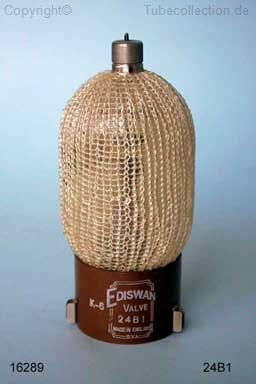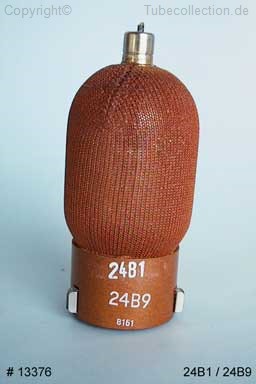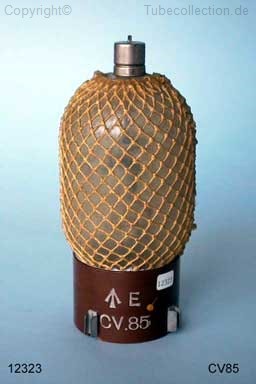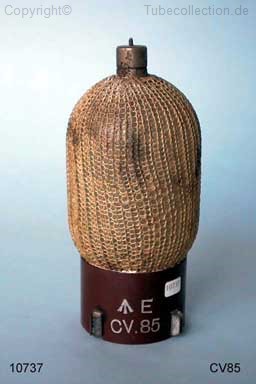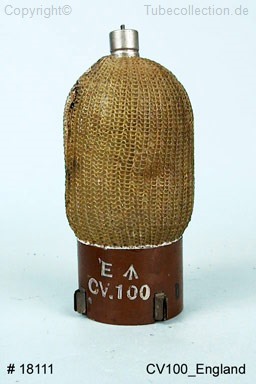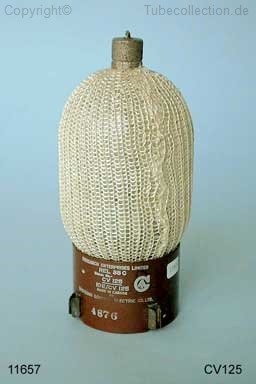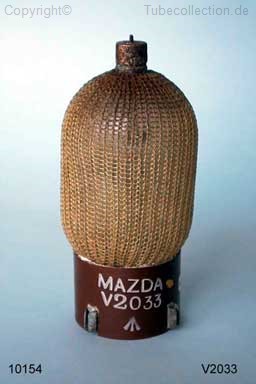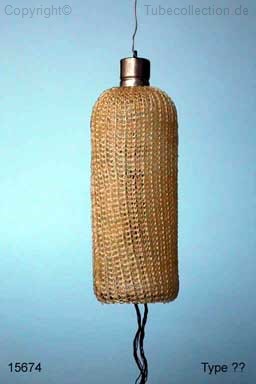|
Radaranlagen erzeugen auf hohen Frequenzen leistungsstarke Impulse. Dazu müssen dem Magnetron entsprechende Stromimpulse zugeführt werden. Dies geschieht über ein Trigatron, einfach ausgedrückt einem Schalter in Form einer Gasentladungsstrecke wo sich die Schaltvorgänge sich von außen im Bereich von Mikrosekunden steuern (triggern) lassen. Dabei werden extrem hohe Spannungen bis zu mehreren zehntausend geschaltet. Während eine jeden Impulses treten sehr hohe Ströme von bis zu 10kA auf. So lassen sich Leistungen im Bereich von bis zu 250kW schalten. In dem gasgefüllten Gefäß stehen sich 2 pilzförmige Hauptelektroden gegenüber. Über diese läuft der Schaltvorgang. Die positive Elektrode hat eine Bohrung, in der sich die Zündelektrode befindet, Erhält diese eine Spannung in ausreichender Höhe, so wird aufgrund des kleineren Abstandes zwischen Zünd- und Hauptelektrode der Zündvorgang eingeleitet. Der charakteristische Aufbau ist sehr schön am Beispiel der deutschen Wehrmachtsröhre LG201 zu erkennen.
Die Trigatrons wurden im WW II von den Engländern entwickelt. In einem abgeschlossenen Glaskolben befinden sich 2 Schalt- und eine Zündelektrode. Für die Gasentladung (den Schaltvorgang) ist der Innenraum mit ca. 93% Argon und 7% Sauerstoff gefüllt. Das Gefäß steht unter ca. 55 PSI (3,5bar) Druck. Zum Schutz vor Schäden an anderen Bauteilen oder Verletzungen von Personen durch umher fliegende Glassplitter im Falle einer Explosion, ist der Kolben auf seiner Außenseite zusätzlich von einem starken Netz umgeben.
|
A trigatron is a type of triggerable spark gap switch designed for high current and high voltage, (usually 10-100 kV and 20-100 kA, though devices in the megaampere range exist as well). It has a very simple construction and in many cases is the lowest cost high energy switching option. It may operate in open air, it may be sealed, or it may be filled with a dialectric gas other than air. The dielectric gas may be pressurized, or a liquid dielectric (eg. mineral oil) may be substituted to further extend the operating voltage. Trigatrons may be rated for repeated use (over 10,000 switching cycles), or they may be single-shot, destroyed in a single use. A trigatron has three electrodes. The heavy main electrodes are for the high current switching path, and a smaller third electrode serves as the trigger. During normal operation, the voltage between the main electrodes is somewhat lower than the breakdown voltage corresponding to their distance and the dielectric between them (usually air,argon-oxygen,nitrogen or sulfur hexafluoride). In order to switch the device, a high voltage pulse is delivered to the triggering electrode. This ionizes the medium between it and one of the main electrodes, creating a spark which shortens the thickness of non-ionized medium between the electrodes. The triggering spark also generates ultraviolet light and free electrons in the main gap. These lead to the rapid electrical breakdown of the main gap, culminating in a low resistance electric arc between the main electrodes. The arc will continue to conduct until the voltage between the electrodes drops sufficiently to extinguish it. The triggering electrode is most often mounted through a hole in the center of the positive main electrode. The undrilled main electrode is the negative electrode. The electrodes undergo considerable heat stress, as they are directly involved in the electric arc. This causes the surfaces to undergo gradual vaporization, so some designs incorporate methods to easily adjust the distance between the electrodes or to actually replace the electrodes. The main electrodes are typically fabricated from brass, or alloys of copperr and tungsten for longer electrode life. The typical construction is shown left at the german WW II - Tube LG201. Glass trigatrons are often further enclosed inside a woven wire mesh, in order to protect the surroundings from fragmentation from possible explosion due to overpressure inside the device. Trigatrons find many different uses in pulsed power applications. For example, they were used in early radar modulators to feed the high-power pulses into the magnetrons. |
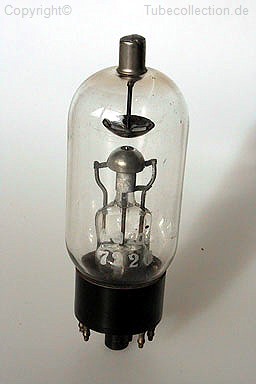 LG201
LG201